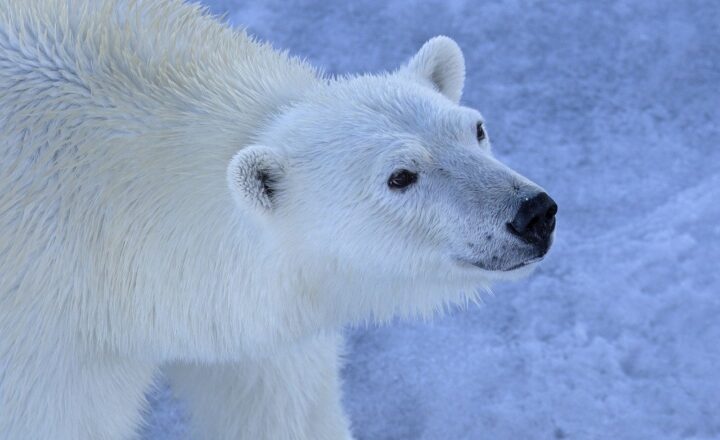Into the Wild: Exploring the Intriguing Lives of Endangered Species
November 18, 2024

The wildlife around us is a treasure trove of beauty, complexity, and the unfathomable mysteries of evolution and adaptation. However, many species that once thrived in our ecosystems are now on the brink of extinction due to human activities, habitat destruction, and climate change. In this article, we delve into the intriguing lives of endangered species, shedding light on their unique characteristics, the reasons for their endangered status, and what we can do to help preserve their existence.
1. Understanding Endangered Species
Endangered species are those whose populations are at risk of extinction. This can be due to various factors, including habitat loss, poaching, climate change, and disease. According to the International Union for Conservation of Nature (IUCN), there are currently over 28,000 species classified as endangered around the globe.
Endangered species are commonly categorized into varying levels of threat, including:
- Critically Endangered: Species that face an extremely high risk of extinction in the wild.
- Endangered: Species that are facing a very high risk of extinction in the wild.
- Vulnerable: Species that are likely to become endangered in the near future.
Every endangered species plays a crucial role in its ecosystem. The loss of one can lead to a cascade of effects, disrupting the balance of nature. Protecting endangered species is not just a matter of conserving individual animals; it’s about preserving the health of entire ecosystems that support life as we know it.
2. Intriguing Lives of Endangered Species
Let’s explore some fascinating endangered species and learn about their unique adaptations and survival challenges:
2.1. Amur Leopard
The Amur leopard (*Panthera pardus orientalis*) is one of the rarest big cats in the world, with fewer than 100 individuals remaining in the wild. Native to the temperate forests of the Russian Far East and northeast China, this elusive cat is known for its striking coat with thick, beautiful spots that help it camouflage in the forest landscape.
However, habitat loss due to logging, poaching, and conflicts with humans are significant threats to its survival. Conservation efforts are focused on protecting its habitat and maintaining prey populations.
2.2. Sumatran Orangutan
The Sumatran orangutan (*Pongo abelii*) is another critically endangered species, with an estimated 14,000 individuals left in the wild. Found only on the islands of Sumatra and Borneo, these highly intelligent primates are known for their incredible ability to use tools and make intricate nests in trees.
Deforestation and palm oil plantations are the main threats to their existence. Conservationists are working to create sustainable palm oil certifications and restore their natural habitats.
2.3. Vaquita
The vaquita (*Phocoena sinus*) is the world’s rarest marine mammal, with an estimated population of fewer than 30 individuals. This small porpoise resides in the northern part of the Gulf of California, Mexico. The vaquita is known for its shy nature and distinctive facial markings, which make it stand out.
The primary threat to the vaquita is bycatch in illegal gillnets set for catching totoaba fish, whose swim bladders are highly prized in traditional Chinese medicine. Several organizations are working to eradicate illegal fishing practices and educate local communities on sustainable fishing practices.
3. The Role of Conservation Efforts
Conservationists, scientists, and local communities are working together globally to save endangered species from extinction. Here are some key strategies used to improve their chances of survival:
3.1. Establishing Protected Areas
Protected areas such as national parks and wildlife reserves play a crucial role in the conservation of endangered species. These areas provide safe havens where species can live without the threat of habitat destruction or poaching.
3.2. Breeding Programs
Captive breeding programs are designed to help increase the population of endangered species by breeding them in controlled environments and later reintroducing them into the wild. Success stories include the California condor and the Arabian oryx, both of which have seen population increases due to such programs.
3.3. Education and Community Involvement
Raising awareness about endangered species and their ecological importance is essential to garnering public support for conservation efforts. Engaging local communities in conservation initiatives ensures that they have a stake in protecting wildlife and their habitats.
Positive outcomes have emerged from community-led programs where locals actively participate in conservation projects, establishing a sense of ownership and interest in preserving their natural heritage.
4. What Can You Do to Help?
We all have a role to play in protecting endangered species. Here are some actions you can take:
- Support Conservation Organizations: Donate or volunteer with reputable organizations that work to protect endangered species and their habitats.
- Educate Yourself and Others: Learn about endangered species and share this knowledge with friends and family. Awareness is key to conservation!
- Make Sustainable Choices: Choose products that do not contribute to habitat destruction, such as sustainable palm oil and timber. Support companies that are committed to conservation efforts.
- Reduce Plastic Use: Plastic pollution is detrimental to marine life. Reduce your plastic consumption and participate in clean-up efforts in your community.
By taking these small steps, you can contribute to the bigger picture of biodiversity conservation, ensuring that future generations will experience the wonders of our planet’s flora and fauna.
Conclusion
The fascinating lives of endangered species are a reminder of the fragility of our planet’s ecosystems. Each species represents a unique piece of our natural heritage, and their survival hinges on our actions. Together, by supporting conservation initiatives and fostering sustainable practices, we can ensure that these magnificent creatures thrive in the wild for years to come.
Let’s embrace our role as stewards of the Earth and take action today to protect the incredible diversity of life that surrounds us.






